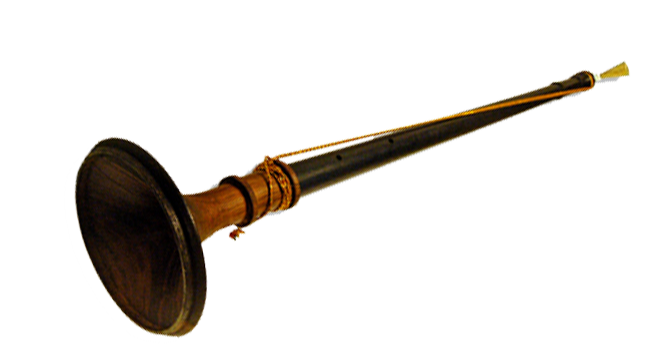Home
NAGASWARAM – THE MANGALA VADHYAM
Nagaswaram, is considered to be one of the most ancient and unique musical instruments of South India. It is a double reed instrument with a conical bore which gradually enlarges toward the lower end. It would be appropriate to call this instrument a rare combination of music and divinity. Its counterpart in the North India is Shenoy. In South Indian Hindu culture, Nagaswaram is considered to be very auspicious, and it is a key musical instrument played in almost all Hindu weddings and temples of the South Indian tradition. Nagaswaram is considered to be Rajavadyam (Royal Instrument) and also Mangalavadyam (Auspicious Instrument).

Temples have nurtured several arts forms, the important ones being music and dance. Both these formed the basic essence of the bhakti tradition. The temples in South India have been the main inspiration and source of the bhakti tradition. Thus music played a special role as a medium for prayer. Musical celebrations (Raga alapana) are very popular in Nagaswaram and this instrument acquired a special status in such presentations. Everyone in the temple precincts relished the music emanating from Nagaswaram. Thus this instrument became an integral part of temple celebrations throughout south India.
Nagaswaram is made from the wood of “Karungaali tree” (a kind of ebony). Each part of the Nagaswaram is related to a deity. The bottom circle to Surya, the Sun God, the upper hole to Goddess Sakti, the inner holes to Lord Vishnu, the body to Lord Brahma, and the seven holes to seven mothers. The Nagaswaram has seven finger-holes, and five additional holes drilled at the bottom which can be stopped with wax to modify the tone. The Nagaswaram has a range of two and a half octaves, similar to the Indian bansuri flute, which also has a similar fingering. Unlike the flute where semi and quarter tones are produced by the partial opening and closing of the finger holes, in Nagaswaram they are produced by adjusting the pressure and strength of the air-flow into the pipe.
The length of the present day Nagaswaram is much longer that what it used to be earlier. In olden days they were smaller in length and can be compared to the present day Timiri Nagaswaram, and had a higher base pitch. The present day Nagaswaram is 34 1/2 inches long and has a base pitch of ‘D’ or 2 kattai. The tonal quality of this is very appealing and attractive. The Timiri Nagaswaram was normally 18 1/4 inches long, and used base pitch of note B sharp or 7 kattai.
“Seevali”- the reed is the blow piece or mouth piece, which is made out of the bottom stem of the long grass which are generally obtained near river banks. Besides spare reeds, a small ivory or horn needle is attached to the instrument, and used to clear the reed of saliva and other debris and allows free passage of air.
The instrument is usually played in pairs, and accompanied by a pair of drums called Thavil.
